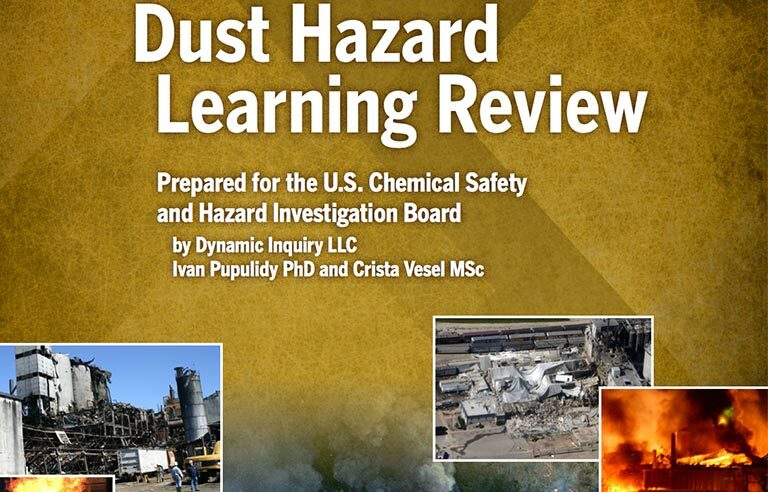‘Multiple perspectives’: CSB releases first ‘learning review’ on combustible dust

Washington — Managing and controlling combustible dust should be considered a unique hazard – not simply “tidying up the place,” the Chemical Safety Board says in a recently released learning review document that includes input from workers and industry stakeholders.
Prepared by Dynamic Inquiry LLC on behalf of the agency, the 47-page document compiles feedback solicited by CSB in a Call to Action – issued in October 2018 – stemming from a May 2017 explosion and fire that killed five workers and injured 14 others at the Didion Milling Co. facility in Cambria, WI. The agency sought comments on the management, control and understanding of combustible dust.
“This learning review represents a new method for the CSB to examine an incident,” CSB Chair and CEO Katherine Lemos said in a Sept. 10 press release. “The outcome of this specific review provides an opportunity for dust hazards to be examined from multiple perspectives, which may allow for a greater understanding of preexisting assumptions and scenarios.”
CSB said it found that more efficient sharing of information between companies, industries and regulators – facilitated openly and without fear of punishment and reprisal – was the stakeholders’ most sought-after goal. Numerous respondents to the Call to Action indicated that a possible normalization of the risk contributed to the ongoing difficulty of keeping facilities dust-free.
Additionally, the document renews CSB’s long-standing call for OSHA to issue a standard on combustible dust. CSB identified 386 combustible dust incidents from 1980 to 2017 that resulted in 178 fatalities and more than 1,000 injuries.
Other recommendations for controlling and mitigating combustible dust hazards include:
- Develop standards to certify dust collection system manufacturers, installation and training.
- Advance psychological safety within organizations to improve the willingness of personnel to provide information and ask questions.
- Explore ways to promote effective communication within and between facilities, including eliminating language barriers. “Even the words used to describe combustible dust can introduce vulnerabilities to the system,” the report states.
- Acknowledge that training doesn’t always ensure learning. Create experiential and collaborative learning methods within facilities.
- Establish an online forum and/or a “lessons learned center,” which allows the community to explore combustible dust issues and share feedback.
“CSB hopes that this product provides further insight and understanding of combustible dust hazards,” Lemos said. “Our goal is to continue to examine incidents from multiple perspectives to better enhance prevention and continually drive chemical safety.”
Post a comment to this article
Safety+Health welcomes comments that promote respectful dialogue. Please stay on topic. Comments that contain personal attacks, profanity or abusive language – or those aggressively promoting products or services – will be removed. We reserve the right to determine which comments violate our comment policy. (Anonymous comments are welcome; merely skip the “name” field in the comment box. An email address is required but will not be included with your comment.)

